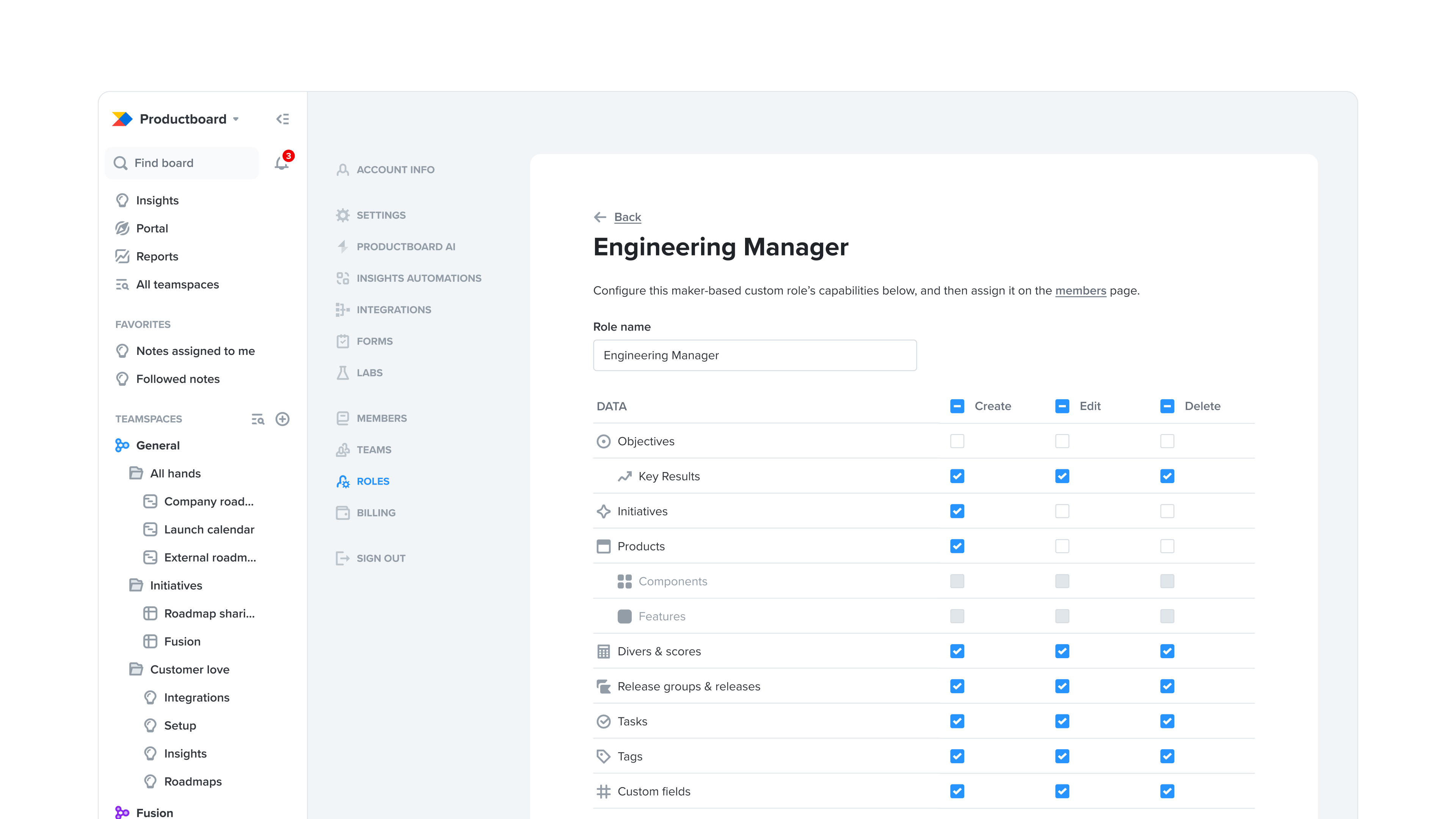productboard is now even better for large & scaling organizations
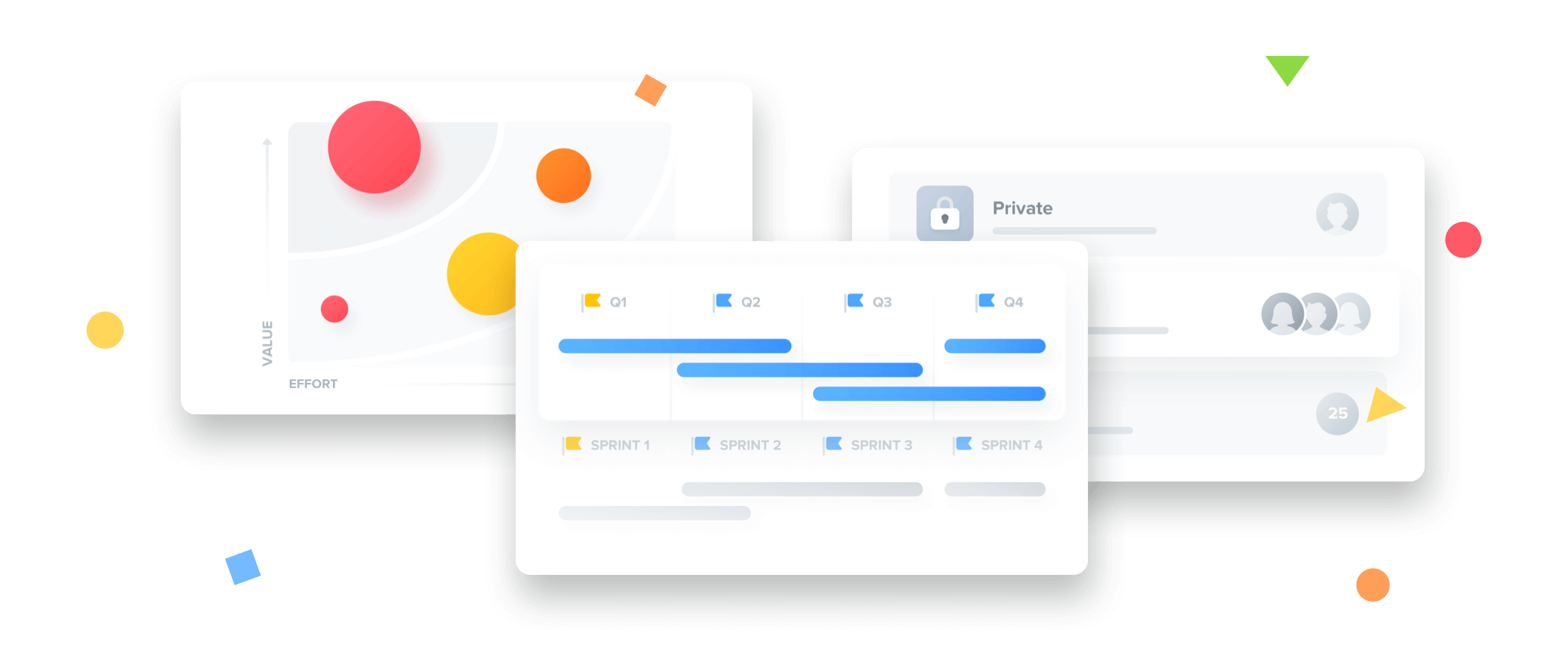
At organizations of every size, product teams know they must deliver excellent products to thrive. Competition is accelerating with new entrants seemingly popping up overnight. With so much choice, customers demand more of their products than ever. Here’s what we know:
- It’s non-negotiable for product teams to achieve a deep understanding of what their users really need.
- Product managers must prioritize their efforts around clear and measurable objectives, aligned with their product strategy.
- Product managers must become product leaders, aligning their teams on the right priorities and rallying the organization around the product roadmap.
These are realities for every product team, but product organizations at large and scaling companies face added challenges. They must collect inputs across a diverse array of channels, standardize prioritization processes to ensure every team’s work aligns with company objectives, and earn buy-in from many stakeholders.
With this latest release, productboard is now even more valuable for meeting these needs of large and scaling organizations.
If that sounds like you, you’ll find productboard is now even better for getting a holistic view of all your products (and the ideas you have for them), prioritizing around clear objectives that are aligned with your product strategy, and collaborating with many product teams out of one productboard project.
A holistic view across all your products
With our new flexible product hierarchy, you can get a holistic view of the entire product portfolio, and all the feature ideas you have for it.
Group and arrange feature ideas by user need, product area, interface, or technical component.
Then capture large ideas and break them down into smaller subfeatures.
Or add smaller related features as subfeatures under a single larger feature idea.
Once features are prioritized, you can push them straight into delivery by way of two-way integrations with Jira, Trello, GitHub, and Pivotal Tracker. When pushing features/subfeatures to Jira, decide their issue type with each and every push.
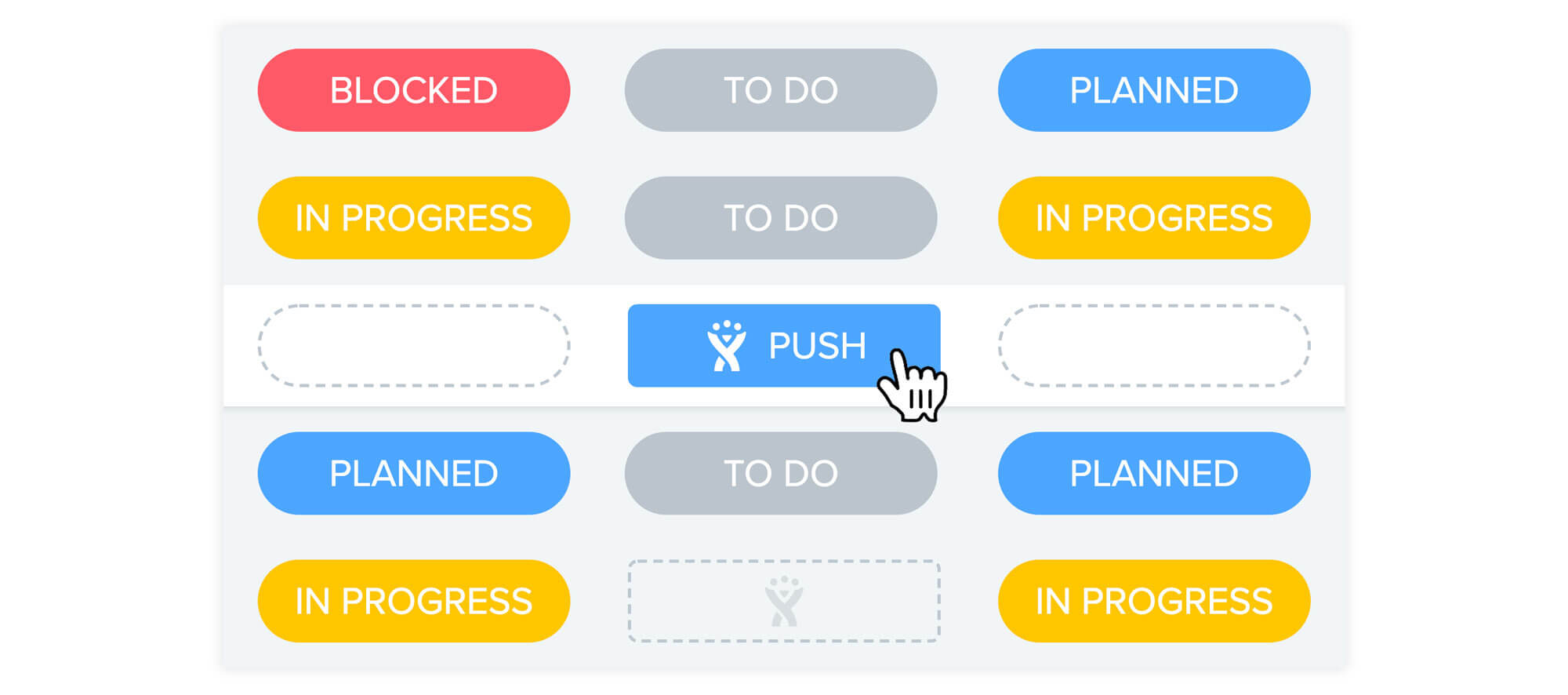
Product managers have long captured their feature ideas in flat lists in spreadsheets, task management tools, or development planning solutions. With our newest update, you finally have a way to get the right context and zoom out for the big picture.
The new subfeatures have been super helpful for breaking down our work while keeping a concise list of top-level features that guide where we're heading. Great work! – Bob Orchard, Flywheel
We're using features spanning multiple releases (and subfeatures in each) to express how we'll iterate on an idea over time. Can't imagine it working a better way. – Joe O’Connell, Moved
See the flexible product hierarchy in action:
https://productboard.wistia.com/medias/v4mpwkxjjy?embedType=async&videoFoam=true&videoWidth=640
Align everyone on the right features to build next
Sometimes product managers get caught in a trap of focusing on the feature itself as opposed to the outcome it drives. But the most effective teams set clear objectives that clarify how features will positively impact customers and the business:
- Help users perform core job-to-be-done X...
- Increase our impact by expanding to customer segment Y...
- Close core feature gaps for user role Z...
You can now define such objectives in productboard and use them as prioritization criteria when deciding what features to build next.
https://productboard.wistia.com/medias/98dbmqrw97?embedType=async&videoFoam=true&videoWidth=640
To prioritize within an objective, use the interactive Prioritization matrix to evaluate each feature’s value versus effort.
https://productboard.wistia.com/medias/1z8a6dmca7?embedType=async&videoFoam=true&videoWidth=640
When it comes time to rallying everyone around what’s coming next, the Roadmap can be grouped by objective to implicitly communicate the why behind every feature idea. Shifting the focus from output to outcomes not only provides business context that helps teammates excel in their work, but it also provides everyone with a greater sense of purpose by connecting their work with the big picture.
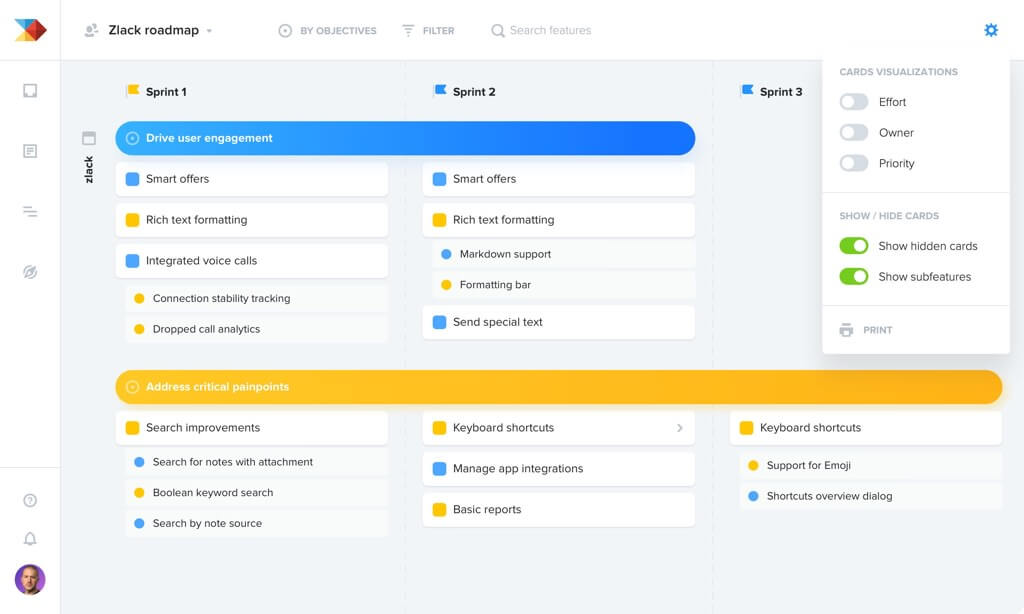
All your product teams, one product system
When managing multiple interrelated products, or products with a shared user base, you can count on productboard to help you capture feature ideas and product feedback in one centralized system. But with sensitive product data, it’s important to ensure everyone has the right level of access.
Now many product teams can organize, prioritize, and plan features in the same productboard project while remaining focused on the data most relevant to them.
Create multiple release groups to manage different teams’ release schedules. Or use one release group for development planning and another for broader releases you’ll display on your company roadmap.
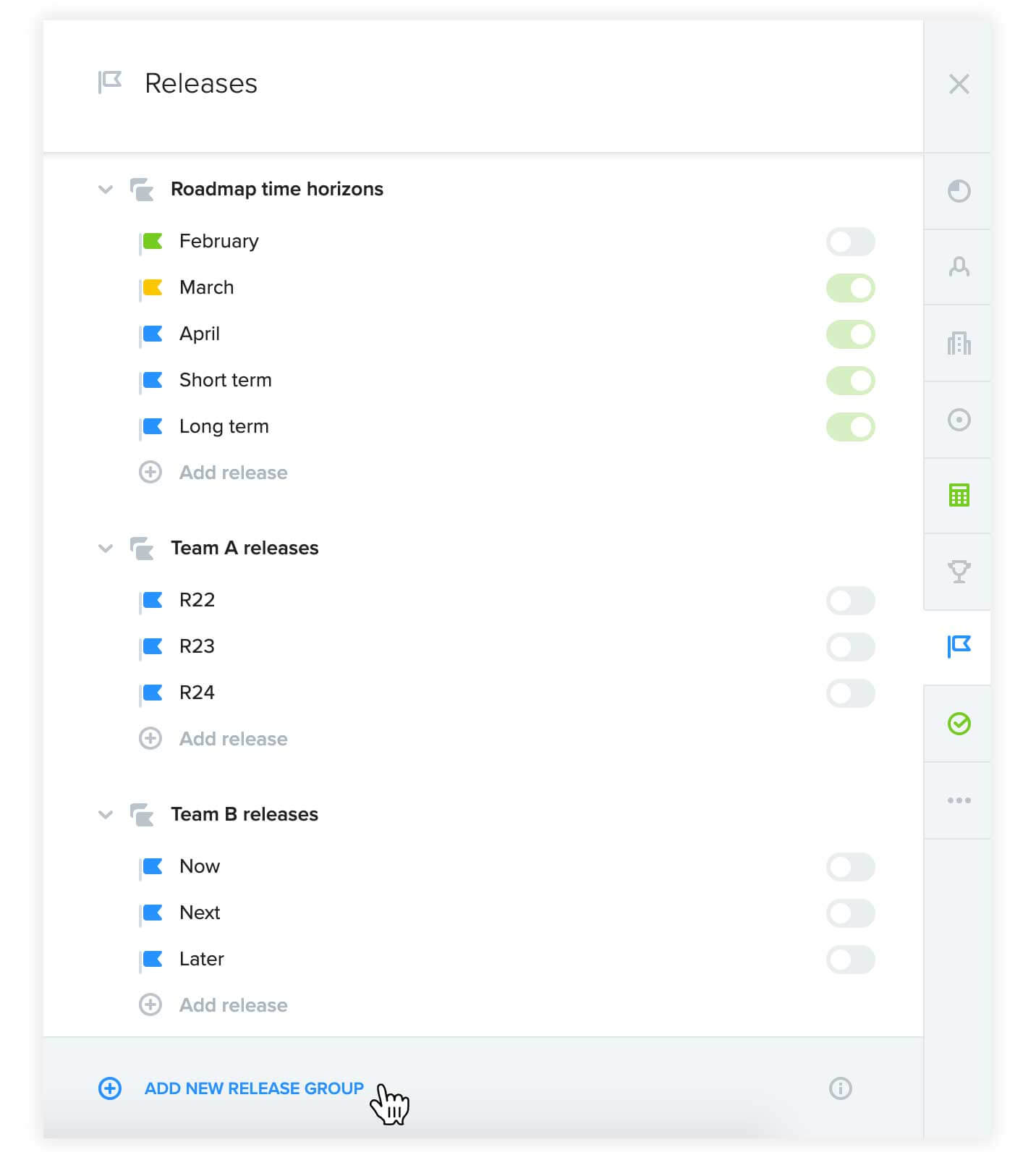
So I started using this multiple release groups feature. Man, it is awesome! With a release group representing ‘versions’ it suddenly opens up a user story mapping style of planning within productboard = Wow! – Søren Fuhr, Frokost.dk
New sharing settings on individual data fields mean you can invite members of the extended product team to get more business context behind the features they’re working on, but keep select data hidden that could cause confusion.
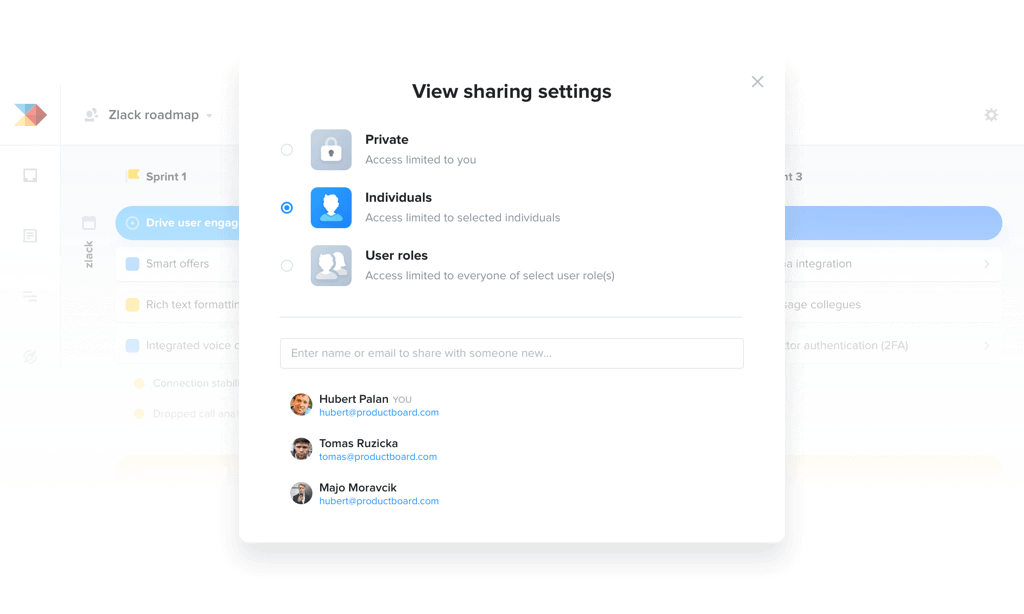
And you can share your roadmap with the entire organization, validate ideas still being considered, or collect product requests and feedback – while restricting access to sensitive information or tentative product plans.
We funnel all of the inputs from the entire company, including customer requests, support issues, NPS feedback, and email threads, all into productboard. It's changed my life. – Cam Hilsman, Salesloft
Ready to see how productboard can help you get the right products to market faster?





